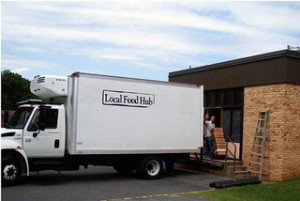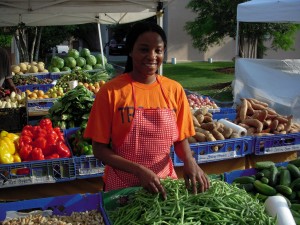Local Foods, Local Places 2015
The Local Foods, Local Places Initiative is once again accepting applications from communities seeking technical assistance to integrate local food systems into community economic action plans. Announced on June 30, 2015, the Initiative’s request for applications represents the second time that communities around the U.S. (including neighborhoods or main street districts) can apply for assistance from a team of agricultural, transportation, public health, environmental, and regional economic experts from a partnership of six federal agencies.

The partnership consists of the U.S. Department of Agriculture, the Centers for Disease Control and Prevention, the Environmental Protection Agency, the Department of Transportation, the Appalachian Regional Commission, and the Delta Regional Authority.
Rather than providing grant funding, the initiative provides up to $800,000 in direct technical assistance to communities to boost economic opportunities for local farmers and businesses, improve access to healthy local food and promote childhood wellness, and create walkable, healthy, economically vibrant neighborhoods. The assistance process features a community workshop that brings people together to develop shared goals and steps to achieve them.
Applications are available online and are due on September 15, 2015.
Application
The application consists of: (1) an online form with some basic questions about the community applicant; and (2) a letter of interest of no more than two pages submitted via the online form. Applications may be submitted by local governments or by nongovernmental organizations.
Although a letter of support is not required, applicants may send letters of support from partner organizations or elected officials that verify statements or objectives written in the letter of interest. Letters of support can be emailed to: lflp@epa.gov.
Special Considerations
Applications from communities that are economically challenged and in the early phases of their efforts to promote local foods and community revitalization are encouraged. Special consideration will be given to communities in federally designated Promise Zones or USDA StrikeForce counties. Applicants whose needs and goals include helping low-income families and kids stay healthy should highlight that in their letter of interest. Communities are strongly encouraged to seek the support of their local development district or regional development organization, or, alternatively, a local community college or university.
Communities selected for the program that are located in the federally designated Appalachia region or the federally designated Delta region may be eligible for implementation support beyond that provided through the technical assistance process.
Local Foods, Local Places 2014
In its first round of technical assistance recipients in 2014, the Initiative helped 26 small-town, urban, and rural communities with projects such as:
- Creating year-round, downtown markets featuring food from local farmers.
- Planning cooperative grocery stores to help revitalize small-town main streets.
- Creating centrally located community kitchens or food hubs to aggregate and market local foods.
- Creating business incubators to help entrepreneurs start food-related businesses on main streets.
- Making it easier for people to walk or bicycle to farmers markets and local restaurants.
- Helping schoolchildren to grow their own food, and making healthy local food accessible to families, including via SNAP (Supplemental Nutrition Assistance Program) benefits.
- Developing community gardens in walkable, transit-accessible places.
For a description of the projects from these 26 communities, see this link.
Questions about the Local Foods, Local Places Initiative or the application process can be emailed to Ed Fendley at lflp@epa.gov.

Made in Rural America Fact Sheets
In conjunction with yesterday’s Local Foods, Local Places announcement, the USDA released an updated state-by-state “Made in Rural America” fact sheets illustrating the impact of USDA’s investments in rural communities, including local food. USDA notes that it has invested more than $800 million in more than 29,100 local and regional food businesses and infrastructure projects since 2009. These businesses and infrastructure projects include food hubs, small scale processing, farmers markets, and other opportunities in local food across all 50 states and the U.S. territories.
For more on USDA programs supporting local and regional food systems, see these pages in the NSAC Grassroots Guide to Federal Farm and Food Programs.

